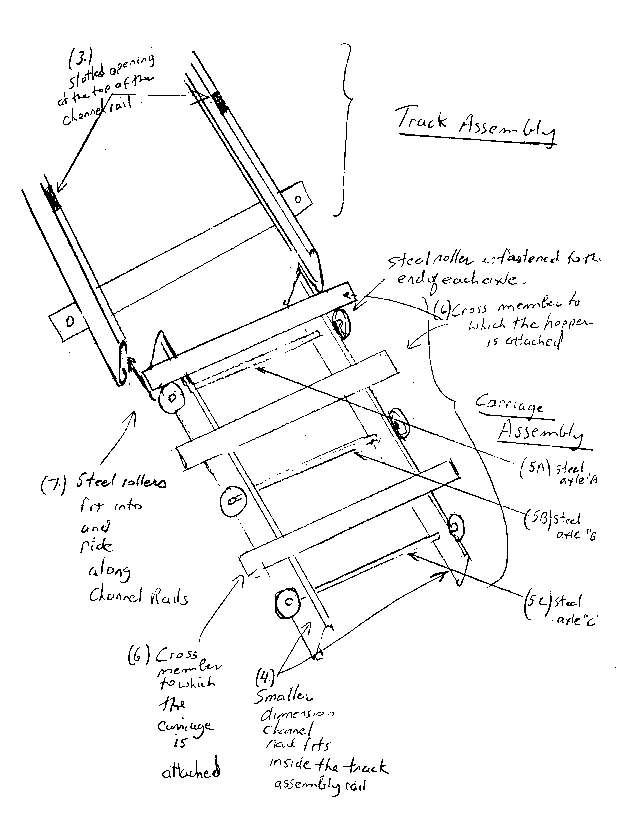Some of the information on this Web page has been provided by external sources. The Government of Canada is not responsible for the accuracy, reliability or currency of the information supplied by external sources. Users wishing to rely upon this information should consult directly with the source of the information. Content provided by external sources is not subject to official languages, privacy and accessibility requirements.
Any discrepancies in the text and image of the Claims and Abstract are due to differing posting times. Text of the Claims and Abstract are posted:
| (12) Patent Application: | (11) CA 2149447 |
|---|---|
| (54) English Title: | DONAHUE JIFFY ROLLER DUMPER AND EXTEND-A-BOX |
| (54) French Title: | BENNE BASCULANTE RAPIDE ET RALLONGE DE PLATEAU DONAHUE |
| Status: | Deemed Abandoned and Beyond the Period of Reinstatement - Pending Response to Notice of Disregarded Communication |
| (51) International Patent Classification (IPC): |
|
|---|---|
| (72) Inventors : |
|
| (73) Owners : |
|
| (71) Applicants : | |
| (74) Agent: | |
| (74) Associate agent: | |
| (45) Issued: | |
| (22) Filed Date: | 1995-05-16 |
| (41) Open to Public Inspection: | 1996-11-17 |
| Examination requested: | 1996-11-29 |
| Availability of licence: | N/A |
| Dedicated to the Public: | N/A |
| (25) Language of filing: | English |
| Patent Cooperation Treaty (PCT): | No |
|---|
| (30) Application Priority Data: | None |
|---|
Running gear consisting of a track and carriage is installed on the bed of a pick-up truck
or on a flat bed trailer in such a manner as to allow a hopper or cargo box to be attached to it.
The hopper rides on the carriage assembly which runs along two parallel channel rails
attached to the truck bed. The hopper and its cargo are pulled out manually until a point of
equilibrium is reached. As the hopper and load are pulled out past the point of equilibrium, a
break in the top of the channel rails allows the rear axle on the carriage to rise up out of the
track, and because the carriage and hopper are now over balanced, the hopper tilts up
thereby dumping the load behind the truck.
The carriage may also be used as a truck bed extender by removing the hopper from the
carriage assembly and extending the carriage to its maximum position and locking it in place.
This would then support loads longer than the length of the bed of the truck.
Note: Claims are shown in the official language in which they were submitted.
Note: Descriptions are shown in the official language in which they were submitted.

2024-08-01:As part of the Next Generation Patents (NGP) transition, the Canadian Patents Database (CPD) now contains a more detailed Event History, which replicates the Event Log of our new back-office solution.
Please note that "Inactive:" events refers to events no longer in use in our new back-office solution.
For a clearer understanding of the status of the application/patent presented on this page, the site Disclaimer , as well as the definitions for Patent , Event History , Maintenance Fee and Payment History should be consulted.
| Description | Date |
|---|---|
| Application Not Reinstated by Deadline | 1998-12-03 |
| Inactive: Dead - No reply to s.30(2) Rules requisition | 1998-12-03 |
| Deemed Abandoned - Failure to Respond to Maintenance Fee Notice | 1998-05-19 |
| Inactive: Status info is complete as of Log entry date | 1998-02-24 |
| Inactive: Abandoned - No reply to s.30(2) Rules requisition | 1997-12-03 |
| Inactive: S.30(2) Rules - Examiner requisition | 1997-06-03 |
| Request for Examination Requirements Determined Compliant | 1996-11-29 |
| All Requirements for Examination Determined Compliant | 1996-11-29 |
| Application Published (Open to Public Inspection) | 1996-11-17 |
| Abandonment Date | Reason | Reinstatement Date |
|---|---|---|
| 1998-05-19 |
Note: Records showing the ownership history in alphabetical order.
| Current Owners on Record |
|---|
| DAVID A. DONAHUE |
| Past Owners on Record |
|---|
| None |